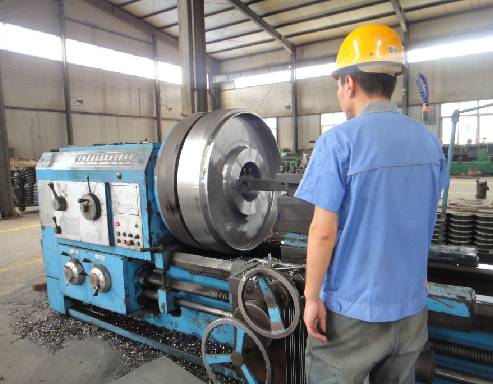 Afrikaans
Afrikaans  Albanian
Albanian  Amharic
Amharic  Arabic
Arabic  Armenian
Armenian  Azerbaijani
Azerbaijani  Basque
Basque  Belarusian
Belarusian  Bengali
Bengali  Bosnian
Bosnian  Bulgarian
Bulgarian  Catalan
Catalan  Cebuano
Cebuano  Corsican
Corsican  Croatian
Croatian  Czech
Czech  Danish
Danish  Dutch
Dutch  English
English  Esperanto
Esperanto  Estonian
Estonian  Finnish
Finnish  French
French  Frisian
Frisian  Galician
Galician  Georgian
Georgian  German
German  Greek
Greek  Gujarati
Gujarati  Haitian Creole
Haitian Creole  hausa
hausa  hawaiian
hawaiian  Hebrew
Hebrew  Hindi
Hindi  Miao
Miao  Hungarian
Hungarian  Icelandic
Icelandic  igbo
igbo  Indonesian
Indonesian  irish
irish  Italian
Italian  Japanese
Japanese  Javanese
Javanese  Kannada
Kannada  kazakh
kazakh  Khmer
Khmer  Rwandese
Rwandese  Korean
Korean  Kurdish
Kurdish  Kyrgyz
Kyrgyz  Lao
Lao  Latin
Latin  Latvian
Latvian  Lithuanian
Lithuanian  Luxembourgish
Luxembourgish  Macedonian
Macedonian  Malgashi
Malgashi  Malay
Malay  Malayalam
Malayalam  Maltese
Maltese  Maori
Maori  Marathi
Marathi  Mongolian
Mongolian  Myanmar
Myanmar  Nepali
Nepali  Norwegian
Norwegian  Norwegian
Norwegian  Occitan
Occitan  Pashto
Pashto  Persian
Persian  Polish
Polish  Portuguese
Portuguese  Punjabi
Punjabi  Romanian
Romanian  Russian
Russian  Samoan
Samoan  Scottish Gaelic
Scottish Gaelic  Serbian
Serbian  Sesotho
Sesotho  Shona
Shona  Sindhi
Sindhi  Sinhala
Sinhala  Slovak
Slovak  Slovenian
Slovenian  Somali
Somali  Spanish
Spanish  Sundanese
Sundanese  Swahili
Swahili  Swedish
Swedish  Tagalog
Tagalog  Tajik
Tajik  Tamil
Tamil  Tatar
Tatar  Telugu
Telugu  Thai
Thai  Turkish
Turkish  Turkmen
Turkmen  Ukrainian
Ukrainian  Urdu
Urdu  Uighur
Uighur  Uzbek
Uzbek  Vietnamese
Vietnamese  Welsh
Welsh  Bantu
Bantu  Yiddish
Yiddish  Yoruba
Yoruba  Zulu
Zulu lagged head pulley
Understanding Lagged Head Pulleys and Their Applications
Lagged head pulleys are critical components in various conveyor systems, especially in industries with heavy material handling. These pulleys are designed to ensure the efficient transfer of materials while minimizing slippage and wear. In this article, we will delve into the significance of lagged head pulleys, their construction, and their applications in various sectors.
What Are Lagged Head Pulleys?
A lagged head pulley is a type of pulley used in conveyor systems, typically positioned at the head end where the conveyor belt is driven. These pulleys are equipped with a lagging material that is bonded to their surface. This lagging serves multiple purposes, primarily improving the friction between the pulley and the conveyor belt. The enhanced grip minimizes slippage, which can cause operational inefficiencies and increased wear on both the belt and the pulley.
Construction of Lagged Head Pulleys
Lagged head pulleys are generally made from robust materials such as steel, enabling them to withstand the stresses associated with heavy loads. The lagging material can vary; it can be made of rubber, ceramic, or other composite materials depending on the specific requirements of the application. Rubber lagging, for example, provides excellent friction and resistance to wear, making it suitable for a variety of environments.
The choice of lagging depends on several factors, including the type of materials being handled, the operating environment, and the specific demands of the conveyor system. In some cases, special features like grooves or patterns are incorporated into the lagging to further enhance its performance in specific applications, such as increased traction or improved water drainage.
Benefits of Lagged Head Pulleys
Lagged head pulleys offer numerous benefits that make them indispensable in material handling operations
. Some of the primary advantages include1. Improved Traction The primary purpose of lagging is to increase the friction between the pulley and the conveyor belt. This improvement in traction translates to more effective material transport with reduced slippage.
2. Extended Equipment Lifespan By reducing slippage, lagged head pulleys help prevent excessive wear and tear on both the pulley and the conveyor belt. This longevity is crucial in minimizing the need for frequent replacements, which can be costly and disruptive.
lagged head pulley

3. Enhanced Cleaning Some lagging materials are designed to provide an easy-clean surface, reducing material buildup on the pulleys. This is particularly important in industries where contamination can lead to product quality issues.
4. Customization Lagged head pulleys can be customized with various lagging types and configurations based on the specific needs of the application. This versatility allows for optimal performance across different environments, whether in a mining, agricultural, or manufacturing setting.
Applications of Lagged Head Pulleys
Lagged head pulleys are used across a wide range of industries. Here are some notable examples
1. Mining and Quarrying In these sectors, lagged head pulleys are essential for handling heavy materials like ore and gravel. The robust construction and enhanced traction help transport large volumes efficiently.
2. Agriculture In agricultural settings, these pulleys are used in systems that transport grain, seeds, and other products. The improved grip ensures that materials are moved without loss or damage.
3. Manufacturing and Assembly Lines In factories, lagged head pulleys play a vital role in conveyor systems that move products through various stages of production. Their reliability helps maintain a consistent workflow and reduces downtime.
4. Material Recycling In recycling facilities, lagged head pulleys contribute to the effective handling of mixed waste materials. The ability to customize lagging materials helps in accommodating different types of recyclable materials.
Conclusion
Lagged head pulleys are an integral component of any effective conveyor system. They enhance the efficiency and reliability of material transport, which is crucial in various industrial applications. By understanding their construction, benefits, and applications, industries can better appreciate the role of these pulleys in their operations and invest in the right systems to meet their specific needs. As technology advances, we can anticipate even more innovative solutions that ensure these essential components adapt to the ever-evolving demands of modern industry.
-
Revolutionizing Conveyor Reliability with Advanced Rubber Lagging PulleysNewsJul.22,2025
-
Powering Precision and Durability with Expert Manufacturers of Conveyor ComponentsNewsJul.22,2025
-
Optimizing Conveyor Systems with Advanced Conveyor AccessoriesNewsJul.22,2025
-
Maximize Conveyor Efficiency with Quality Conveyor Idler PulleysNewsJul.22,2025
-
Future-Proof Your Conveyor System with High-Performance Polyurethane RollerNewsJul.22,2025
-
Driving Efficiency Forward with Quality Idlers and RollersNewsJul.22,2025





























